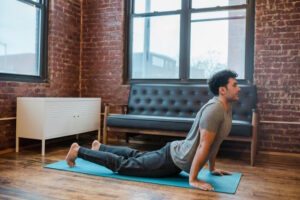
Pilates is a widely practiced form of exercise that has gained popularity for its numerous health benefits and holistic approach to fitness. In this comprehensive guide, we’ll delve into the world of Pilates, exploring its core principles, the workout it offers, its purpose, and how it differs from yoga. Whether you’re a newcomer or seeking a deeper understanding of Pilates, you’ve come to the right place.
What is the Pilates Workout?
Pilates is a form of exercise that focuses on strengthening the body’s core muscles while simultaneously improving flexibility, balance, and overall body awareness. It was developed by Joseph Pilates in the early 20th century as a method for rehabilitation and physical conditioning. The primary goal of Pilates is to create a balanced and strong body, with an emphasis on core strength.
Core Principles of Pilates
Pilates is built upon several core principles, which serve as the foundation for the workout:
1. Control: Pilates places a strong emphasis on control of movement. Each exercise is performed with precision, ensuring that the body moves smoothly and with purpose.
2. Centering: The core, often referred to as the body’s powerhouse, is the focal point in Pilates. Movements initiate from the core, helping to build strength and stability.
3. Concentration: Pilates demands mental focus. Practitioners are encouraged to concentrate on their movements, breathing, and body alignment during each exercise.
4. Precision: Precision is key in Pilates. It’s about performing each exercise with accuracy, paying attention to form and alignment to avoid injury.
5. Breathing: Proper breathing is integral to Pilates. It helps to oxygenate the body and facilitates movement. Pilates typically involves rhythmic, controlled breathing patterns.
6. Flow: Pilates exercises are often performed in a flowing sequence, promoting graceful and efficient movement patterns.
What is Pilates and What Does It Do?
Pilates offers a wide range of benefits that encompass physical, mental, and even emotional well-being:
1. Core Strength: One of the primary outcomes of Pilates is a strengthened core. This can lead to improved posture, reduced back pain, and better stability.
2. Flexibility: Regular Pilates practice enhances flexibility by increasing the range of motion in joints and muscles.
3. Improved Posture: Pilates encourages awareness of body alignment and helps correct posture issues, reducing the risk of strain and injury.
4. Balance and Coordination: The controlled movements in Pilates promote balance and coordination, which can be especially beneficial as we age.
5. Muscle Tone: Pilates targets various muscle groups, resulting in improved muscle tone and a leaner appearance.
6. Stress Reduction: The mindful and controlled nature of Pilates can reduce stress and promote relaxation.
7. Injury Prevention: By strengthening the core and improving alignment, Pilates can help prevent injuries in everyday activities and other forms of exercise.
What is Yoga vs. Pilates?
While both yoga and Pilates focus on mind-body wellness and incorporate controlled movements, they differ in several key ways:
1. Origins: Yoga has ancient roots in India and is deeply intertwined with spiritual and meditative practices. Pilates, on the other hand, was developed in the early 20th century by Joseph Pilates as a form of physical conditioning and rehabilitation.
2. Breathing: Both practices emphasize breathing, but the breathing techniques differ. Yoga often uses specific breathwork (pranayama), while Pilates typically involves coordinated breathing with movements.
3. Goals: Yoga aims to achieve a balance of mind, body, and spirit, promoting inner peace and harmony. Pilates primarily targets physical fitness, with a focus on core strength and overall body conditioning.
4. Flexibility vs. Core Strength: Yoga places a strong emphasis on flexibility, with many poses designed to increase range of motion. Pilates, while also improving flexibility, prioritizes core strength as a foundation for overall fitness.
5. Exercise Variety: Yoga incorporates a wide range of poses and styles, while Pilates focuses on a specific set of exercises and apparatus, including the reformer and mat work.
6. Spiritual vs. Physical: Yoga’s spiritual and meditative aspects can be more pronounced, while Pilates is often viewed as a physical workout with mental benefits.
Summarizing the Answers
In summary, Pilates is a holistic exercise method that prioritizes core strength, control, and precision. It offers a myriad of benefits, including improved posture, flexibility, stress reduction, and injury prevention. While it shares some similarities with yoga, Pilates is distinct in its origins, goals, and approach to physical fitness. By understanding the core principles of Pilates and its potential benefits, individuals can make informed decisions about incorporating it into their fitness routines.